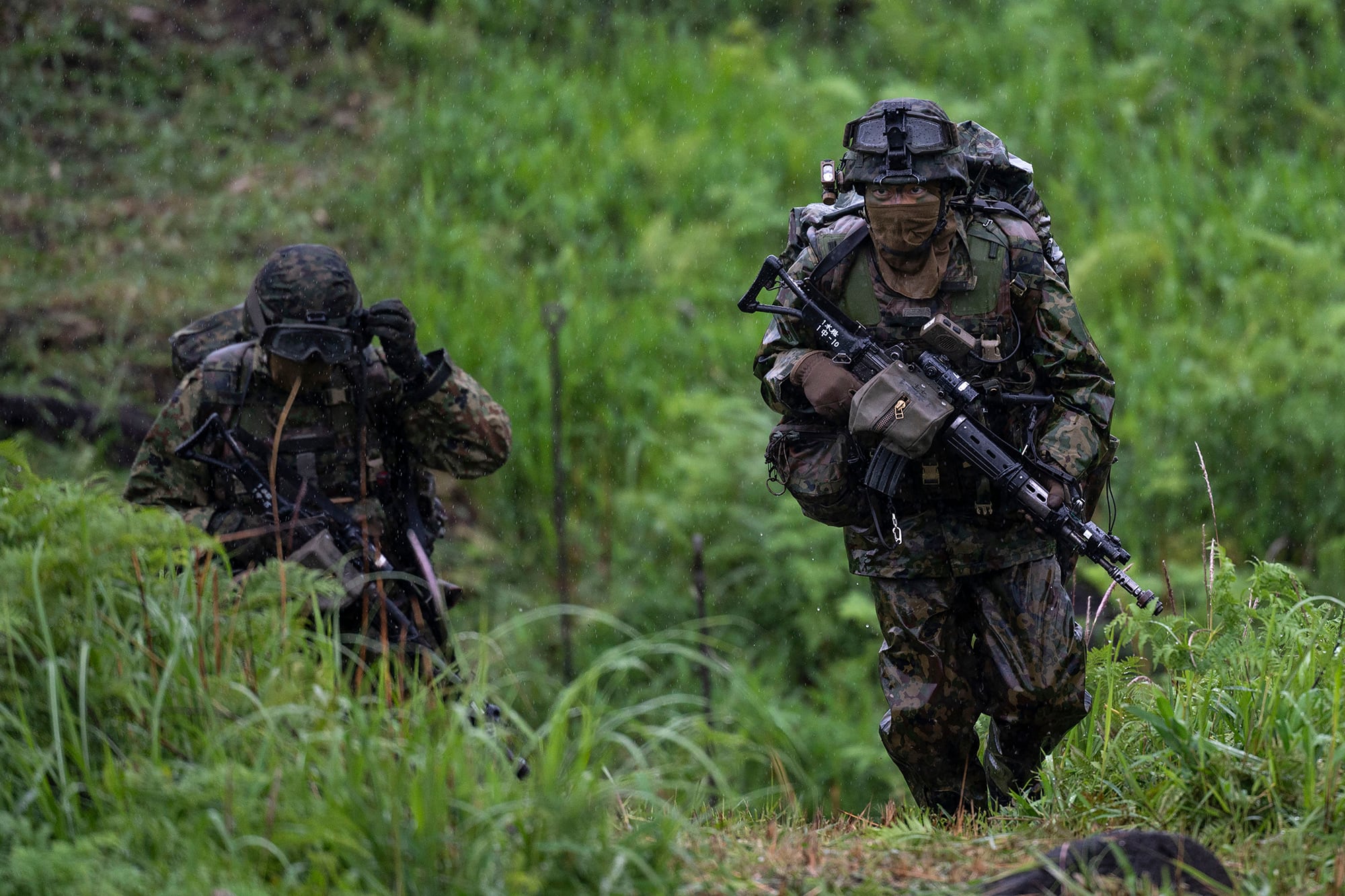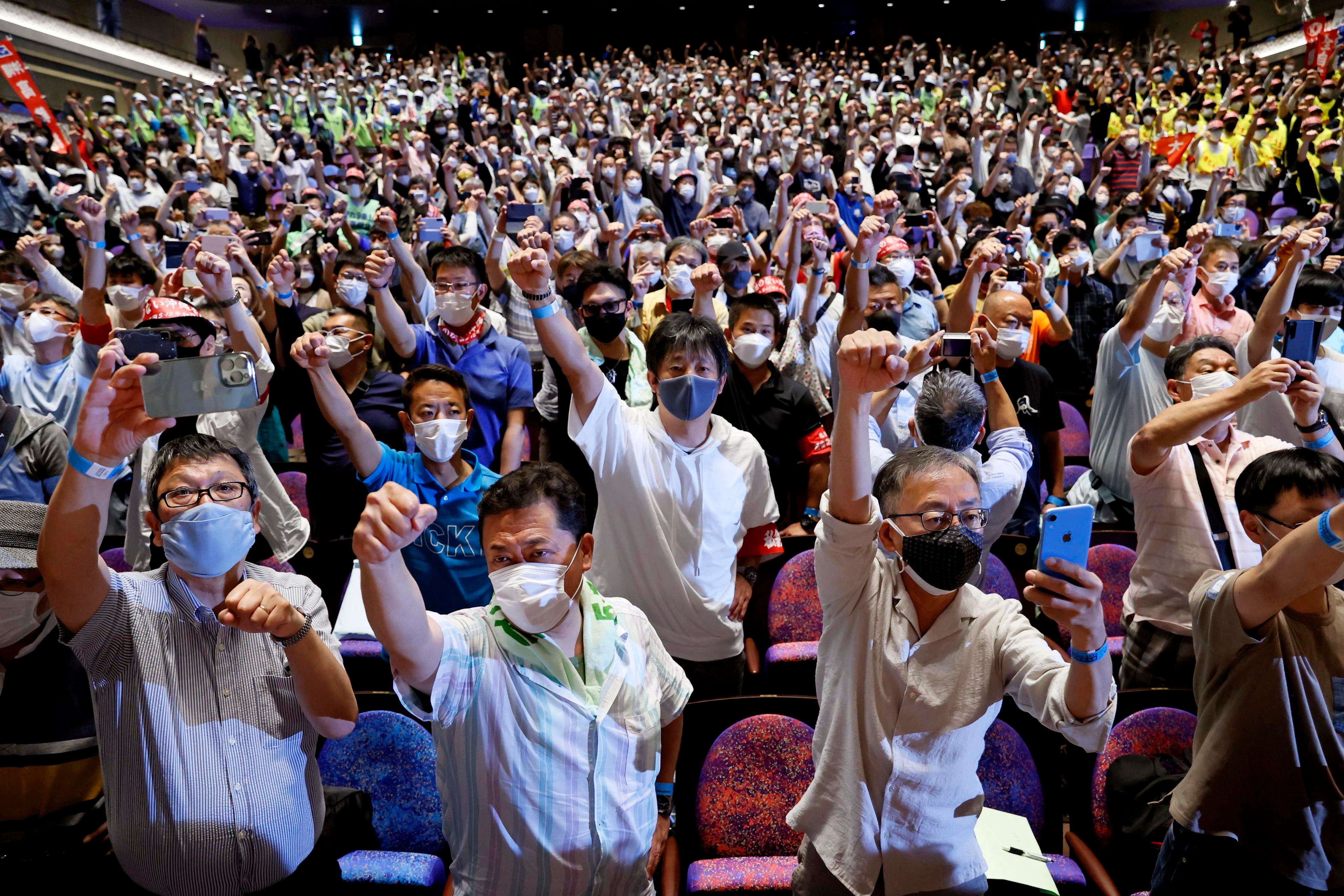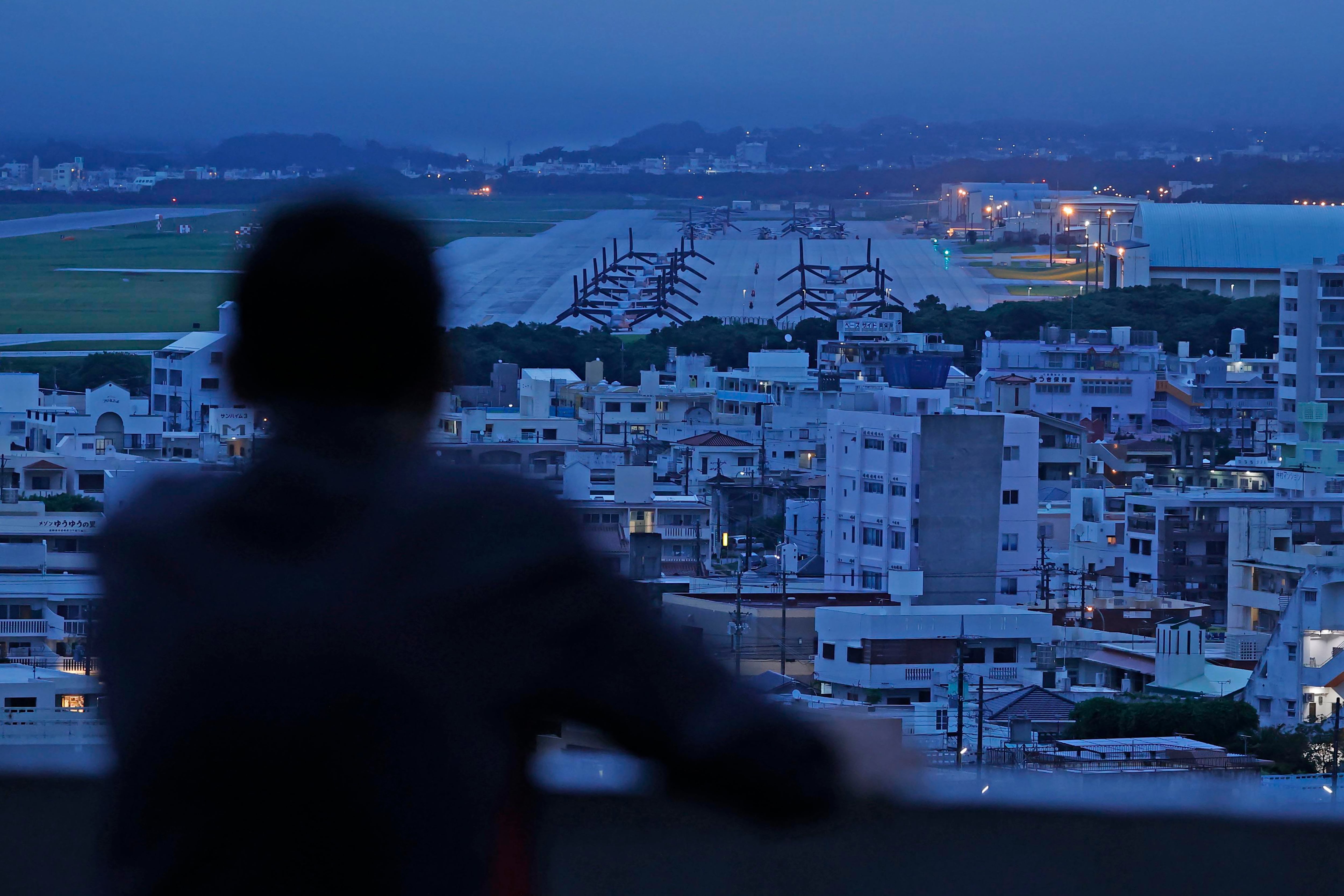TOKYO — Okinawa Governor Denny Tamaki on Sunday urged Japan’s central government to do more to reduce the U.S. military presence in the southern island group as it marked the 50th anniversary of its return to Japan after 27 years of American rule, amid frustration and bitterness over a lack of support from the mainland.
Tamaki said Okinawa has come a long way since the devastation of World War II and nearly three decades of U.S. rule, which ended when it reverted to Japan on May 15, 1972. But the tiny island group’s yearslong demand for the mainland to share its security burden remains unresolved.
“I call on the central government to share with the entire nation the significance of Okinawa’s reversion and the importance of permanent peace that Okinawans have long craved for,” Tamaki said.
RELATED

Ceremonies marking the anniversary were held simultaneously in two locations — one in the Okinawan city of Giowan, home to a disputed U.S. air station, and the other in Tokyo. The separate ceremonies symbolize the deep divide in views over Okinawa’s history and ongoing suffering.
Prime Minister Fumio Kishida said he takes Okinawa’s concerns seriously and will make efforts to reduce the burden while still maintaining U.S. military deterrence on the islands.
Kishida and his minister in charge of the islands were in Okinawa, where hundreds of protesters staged a rally Saturday demanding a speedier reduction of U.S. military forces, as fears grow that Okinawa may become a front line of conflict amid rising China tensions.
More protests were held Sunday on Okinawa, including one in the prefectural capital of Naha, where nearly 1,000 people renewed their demands for peace.

Resentment and frustration run deep in Okinawa over the heavy U.S. presence and Tokyo’s lack of effort to negotiate with Washington to balance the security burden between mainland Japan and the southern island group.
Because of the US. bases, Okinawa faces burdens including noise, pollution, accidents and crime related to American troops, Okinawan officials and residents say.
Adding to Okinawa’s fears is the growing deployment of Japanese missile defense and amphibious capabilities on Okinawa’s outer islands, including Ishigaki, Miyako and Yonaguni, which are close to geopolitical hotspots like Taiwan.
Okinawa was the site of one of the bloodiest battles of World War II, which killed about 200,000 people, nearly half of them Okinawan residents.
Okinawa was sacrificed by Japan’s imperial army to defend the mainland, and many Okinawans are skeptical that the Japanese military would protect them in future conflicts, experts say.
The U.S. military kept its troop presence on the island group for 20 years longer than most of Japan, until 1972, due to Okinawa’s strategic importance for Pacific security to deter Russia and communism.
Many Okinawans had hoped that the islands’ return to Japan would improve the economy and human rights situation as well as base burdens.
Today, a majority of the 50,000 U.S. troops based in Japan under a bilateral security pact and 70% of military facilities are still in Okinawa, which accounts for only 0.6% of Japanese land. The burden has increased from less than 60% in 1972 because unwelcomed U.S. bases were moved from the mainland.
Emperor Naruhito, in his online speech from his Tokyo palace, acknowledged “many issues” remain on Okinawa and said “I hope that the people, including the younger generation, will have a deeper understanding of Okinawa.”
His abdicated father Akihito, devoted to atoning for scars of the war fought in his father Hirohito’s name, was nearly hit by a Molotov cocktail during a 1975 visit as crown prince, but continued showing a special interest in Okinawa.
U.S. President Joe Biden, who is scheduled to visit Japan next week, praised the strong U.S.-Japan alliance and their shared values and vision.
“I am profoundly grateful for Japan’s resolute support for democracy, freedom, and the rule of law and for Okinawa’s contribution to advancing these ideals,” Biden said in a statement.
The biggest sticking point between Okinawa and Tokyo is the central government’s insistence that a U.S. marine base in a crowded neighborhood, the Futenma air station, should be relocated within Okinawa instead of moving it elsewhere as demanded by many Okinawans.
Tokyo and Washington initially agreed in 1996 to close the station after the 1995 rape of a schoolgirl by three U.S. military personnel led to a massive anti-base movement.
Tamaki earlier in May submitted a petition to Kishida’s government and U.S. Ambassador to Japan Rahm Emanuel demanding a significant reduction of the U.S. military in Okinawa, the immediate closure of the Futenma base and the scrapping of a new base in Henoko.
Economic, educational and social development in Okinawa lagged behind as Japan enjoyed a postwar economic surge that was helped by lower defense spending because of the U.S. military presence in Okinawa.
The central government’s development fund since the reversion has improved Okinawa’s infrastructure but the growth of local industry that was largely hampered during U.S. rule is still largely limited to tourism.
Today, Okinawa’s average household income is the lowest and its unemployment is the highest of Japan’s 47 prefectures. If land taken by the U.S. military is returned to the prefecture for other use, it would produce three times more income for Okinawa than the island now makes from bases, Tamaki said recently.
Okinawan authorities regularly face denials by the U.S side in criminal and environmental investigations.





